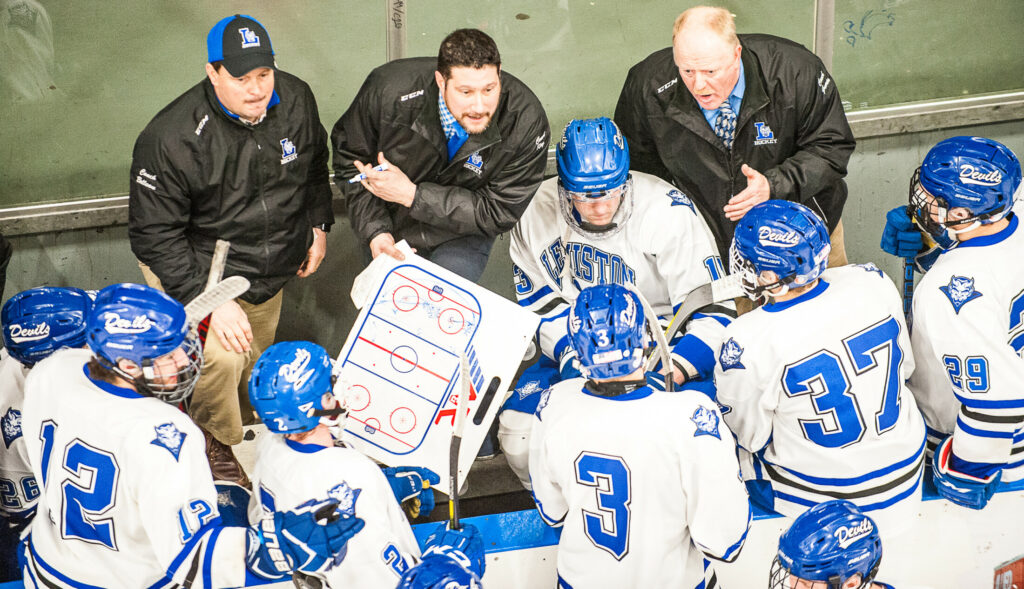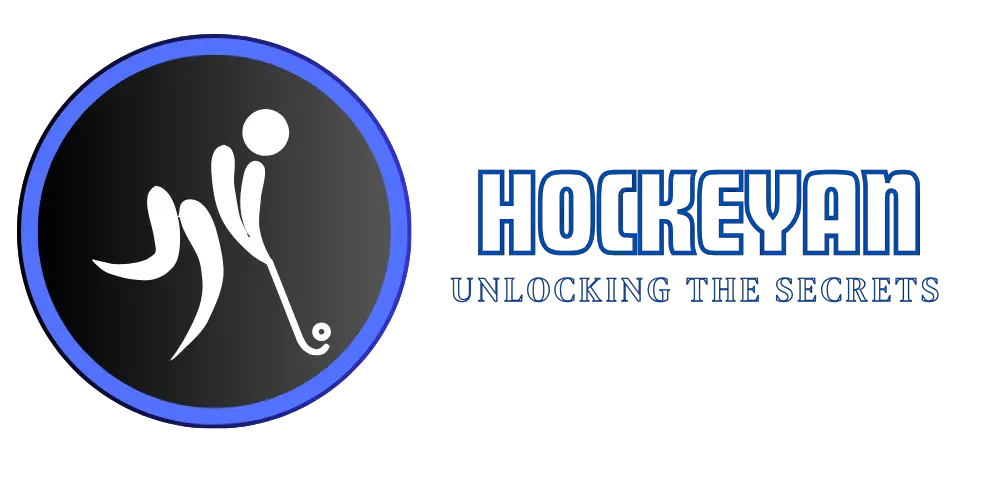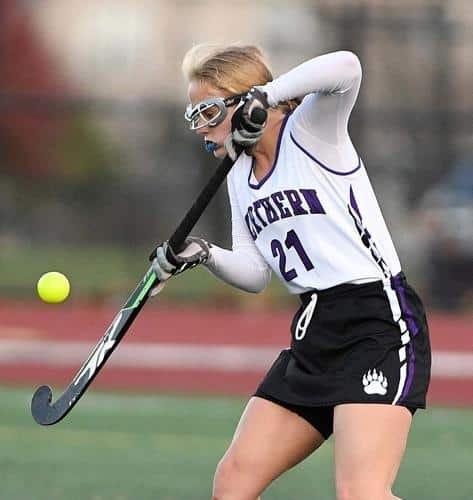Yes, hockey does have timeouts. Each team gets one timeout per game.
Hockey is a fast-paced sport that requires quick decisions and strategies. Teams sometimes need a brief break to regroup. Coaches use timeouts to give instructions, change tactics, or give players a short rest. Understanding the rules around timeouts can enhance your appreciation of the game.
This knowledge can also help you follow the action better. In this blog, we will explore how timeouts work in hockey. We’ll look at when they can be used and their impact on the game. So, let’s dive into the details and learn more about this important aspect of hockey.

Credit: www.shutterstock.com
The Structure Of A Hockey Game
Understanding the structure of a hockey game is key to enjoying it fully. Each game is divided into specific sections, including periods and intermissions, and each has its own duration. This structure makes the game exciting and easy to follow.
Periods And Intermissions
In a standard hockey game, there are three periods. Each period lasts 20 minutes. After each period, there is an intermission. Intermissions give players a break and allow for ice resurfacing.
Here is a breakdown:
- First Period: 20 minutes of play
- First Intermission: 15 to 18 minutes
- Second Period: 20 minutes of play
- Second Intermission: 15 to 18 minutes
- Third Period: 20 minutes of play
Teams use intermissions to strategize and rest. Fans often enjoy entertainment or refreshments during these breaks.
Duration Of Play
The total duration of play in a hockey game is 60 minutes. This time is divided into three periods of 20 minutes each. If the game is tied after three periods, overtime may be played. Overtime is usually a 5-minute period. If the game is still tied, a shootout may occur.
Here’s a quick table to summarize:
| Period | Duration |
|---|---|
| First Period | 20 minutes |
| Second Period | 20 minutes |
| Third Period | 20 minutes |
During each period, there are no official timeouts. Coaches can only call a timeout once per game. This adds to the fast-paced nature of hockey, keeping the action continuous and thrilling.
Timeout Rules In Hockey
Understanding the timeout rules in hockey can enhance your appreciation for the game. Timeouts offer teams a strategic pause to regroup, plan, and adjust their strategies. But when can teams actually call for a timeout? And how do they use these precious moments to their advantage? Let’s dive into the specifics.
When Timeouts Are Allowed
In hockey, each team is allowed one 30-second timeout per game. This applies to both professional and amateur leagues. A coach or player can request a timeout during a stoppage in play. This includes:
- After an icing call
- Following a goal
- When the puck goes out of play
Timeouts cannot be called during live play. This rule ensures the game flows smoothly and minimizes interruptions.
Strategic Uses Of Timeouts
Teams use timeouts for various strategic purposes. Here are some common scenarios:
- Regrouping: Coaches use timeouts to regroup their players, especially if the team is under pressure.
- Resting Key Players: A timeout allows star players a brief rest, particularly in critical moments.
- Last-minute Strategies: Coaches may call a timeout near the end of a game to plan a final push.
Effective use of timeouts can influence the outcome of a game, making them a valuable tool in a coach’s arsenal.
Comparing Timeouts Across Leagues
Hockey is a fast-paced sport that requires quick thinking and strategy. Timeouts play a crucial role in allowing teams to regroup and plan their next moves. But how do these timeouts vary across different leagues? Let’s dive into the specifics.
Nhl Timeout Regulations
In the NHL, each team is allowed one 30-second timeout per game. This single timeout can be used at any point during regulation or overtime. Coaches often use this timeout to rest players or to discuss strategy during crucial moments.
Timeouts cannot be carried over to subsequent periods or games. If a team does not use its timeout in regulation, it does not gain an extra timeout in overtime. This rule ensures that coaches use their timeouts wisely.
Here’s a quick overview of NHL timeout regulations:
| League | Number of Timeouts | Duration | Usage |
|---|---|---|---|
| NHL | 1 | 30 seconds | Anytime during regulation or overtime |
International And Amateur Leagues
International and amateur hockey leagues have different rules for timeouts. Some leagues allow more flexibility, while others have stricter regulations. For example, in the IIHF (International Ice Hockey Federation), teams are also permitted one 30-second timeout per game.
In amateur leagues, the rules can vary widely. Some leagues allow multiple timeouts, while others follow stricter guidelines similar to the NHL. Coaches in amateur leagues often use timeouts to give players a break or to make quick adjustments.
Here’s a comparison of timeout regulations in various leagues:
| League | Number of Timeouts | Duration | Usage |
|---|---|---|---|
| IIHF | 1 | 30 seconds | Anytime during the game |
| Amateur Leagues | Varies | Varies | Flexible, depending on the league |
Understanding these differences can help fans and players appreciate the unique strategies employed in different hockey leagues.
Impact Of Timeouts On Gameplay
Timeouts in hockey can change the course of the game. They offer a brief pause that can influence strategies, player performance, and the overall flow of the game. Understanding how timeouts impact gameplay can help fans and players appreciate the deeper aspects of hockey.
Coaches’ Strategies
Coaches use timeouts to adjust their team’s strategy. During these breaks, they can communicate important changes to the players. This may include altering defensive formations or switching up offensive plays. A well-timed timeout can disrupt the opposing team’s momentum.
Timeouts also allow coaches to analyze the current state of the game. They can pinpoint weaknesses in the opponent’s strategy. This allows them to give specific instructions to counter these weaknesses. A single timeout can lead to a significant shift in the game’s dynamics.
| Strategy | Purpose |
|---|---|
| Defensive Adjustment | Strengthen defense to prevent goals |
| Offensive Play | Increase chances of scoring |
| Momentum Shift | Break the opponent’s rhythm |
Player Rest And Recovery
Hockey is physically demanding. Players expend a lot of energy during the game. A timeout provides a much-needed break. This brief rest helps players recover their stamina. They can hydrate, catch their breath, and refocus.
Fatigue can lead to mistakes on the ice. By taking a timeout, coaches can ensure their players are at their best. A well-rested player can perform better. This can make the difference between winning and losing.
- Hydration
- Stamina recovery
- Refocusing
Controversies And Debates
Hockey is a fast-paced sport, loved by many. But there are debates about timeouts. Some argue for more breaks. Others think the game should stay as it is. These debates are not new. Let’s dive into the arguments and potential rule changes.
Arguments For More Timeouts
Fans and coaches have their reasons for wanting more timeouts:
- Rest for Players: Hockey is intense. More breaks could help players rest.
- Strategic Planning: Coaches could use extra timeouts to plan better plays.
- TV Broadcasts: More timeouts can mean more ads. This benefits networks.
Potential Rule Changes
Ideas for changing timeout rules include:
- Additional Timeouts: Teams might get one extra timeout per period.
- Shorter Timeouts: Current timeouts could be split into shorter breaks.
- Situational Timeouts: Allow timeouts only in specific game situations.
These changes could impact the game. Some might make it more strategic. Others might make it longer. It’s a topic worth discussing.

Credit: www.learfield.com

Credit: www.sunjournal.com
Frequently Asked Questions
Does Hockey Have Timeouts?
Yes, hockey has timeouts. Each team gets one timeout per game.
How Long Is A Hockey Timeout?
A hockey timeout lasts 30 seconds.
When Can Teams Call A Timeout In Hockey?
Teams can call a timeout during any stoppage in play.
Are Timeouts Used In Overtime Periods?
Yes, teams can use their timeout in overtime if they haven’t used it.
Do Hockey Timeouts Stop The Game Clock?
Yes, the game clock stops during a timeout.
Can Coaches Use Timeouts To Challenge Plays?
No, hockey timeouts cannot be used to challenge plays.
Are There Tv Timeouts In Hockey?
Yes, there are TV timeouts in professional hockey games.
How Many Tv Timeouts Are In A Hockey Game?
There are three TV timeouts per period in a hockey game.
Do Youth Hockey Games Have Timeouts?
Yes, youth hockey games usually have one timeout per team.
Conclusion
Hockey does have timeouts, and they play a crucial role. Coaches use them for strategy adjustments and player rest. Fans enjoy the brief breaks in the action. Timeouts add excitement and can change the game’s momentum. Understanding timeouts makes watching hockey more enjoyable.
Next time you watch a game, notice how teams use their timeouts. They could be the key to victory. Keep cheering and enjoy the game!




